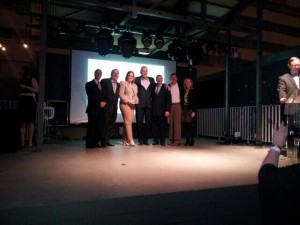Here are the quick notes from the public releases from this morning’s keynote address.
Dell and Red Hat to Co-Engineer Enterprise-Grade, OpenStack Private Cloud Solutions
· Dell and Red Hat collaboration to enable customers worldwide to build and use highly-scalable, open, private cloud solutions based on OpenStack
· Dell becomes first company to OEM Red Hat Enterprise Linux OpenStack Platform
· Dell joins the Red Hat OpenStack Cloud Infrastructure Partner Network as an Alliance Partner
· Dell to deliver Red Hat Enterprise Linux OpenStack Platform through a dedicated practice within Dell Cloud Services
Dell and Google to Help Developers and Businesses thrive in a Cloud-Based, Mobile-Driven World
· The collaboration builds on core strengths, making innovative cloud solutions easily accessible for companies of all types and sizes
· Dell and Google’s cloud expertise will help organizations capitalize on the immense business value of cloud computing
Dell Brings CenturyLink into the Dell Cloud Partner Program, Enabling Customers Worldwide to Harness the Power of Public Cloud
· Dell teams with CenturyLink to offer customers more choice and flexibility with an enterprise public cloud offering complete with IaaS, PaaS and cloud management
· The Dell-CenturyLink alliance makes cloud computing easier, giving customers globally the confidence to implement cloud solutions to drive competitive advantage
· The combined cloud expertise of Dell and CenturyLink will help customers tap into the full potential of cloud to transform their business
Dell and Microsoft Strengthen Alliance to Help Customers Take Full Advantage of Public Cloud
· Dell expands Cloud Partner Program to include Microsoft and Windows Azure, building on Dell’s current Windows Application Services capabilities
· The Dell-Microsoft relationship brings added choice and flexibility to customers, giving businesses a competitive advantage when implementing public cloud
· With Windows Azure and Dell Cloud offerings, customers can easily deploy on-demand cloud infrastructure that scales and adapts to evolving business needs
Dell and Dropbox Partner to Help Businesses Embrace the Evolving Workforce
· Dell and Dropbox bring cutting-edge solutions to businesses of all sizes with Dell Data Protection | Cloud Edition and Dropbox for Business
· Dell is bringing Dropbox for Business to its customers via its global sales team
· Thought leaders join forces to define the next frontier in corporate cloud storage use and policy
Dell Expands its Commitment to Entrepreneurship and Innovation with $300 Million Strategic Innovation Venture Fund
· Dell Ventures helps identify, fund and fuel visionary technologies that anticipate and address future IT needs
· New fund expands $60 million Dell Fluid Data Storage Fund to $300 million and re-focuses investment scope to reach to new frontiers of innovation beyond storage
Dell Services Helps Customers in Highly Regulated Industries Adapt to Changes and Innovate for the Future
· Dell helps health plans and healthcare providers improve operations; makes medical images more accessible with record-setting clinical archive growth; and introduces new cloud solution for hospitals in India
· New digital transformation solutions to help banking, financial services, securities and insurance (BFSI) organizations better engage customers and significantly improve operations
· Dell Services continues gaining momentum with customers in healthcare and BFSI in 2013
Like this:
Like Loading...

